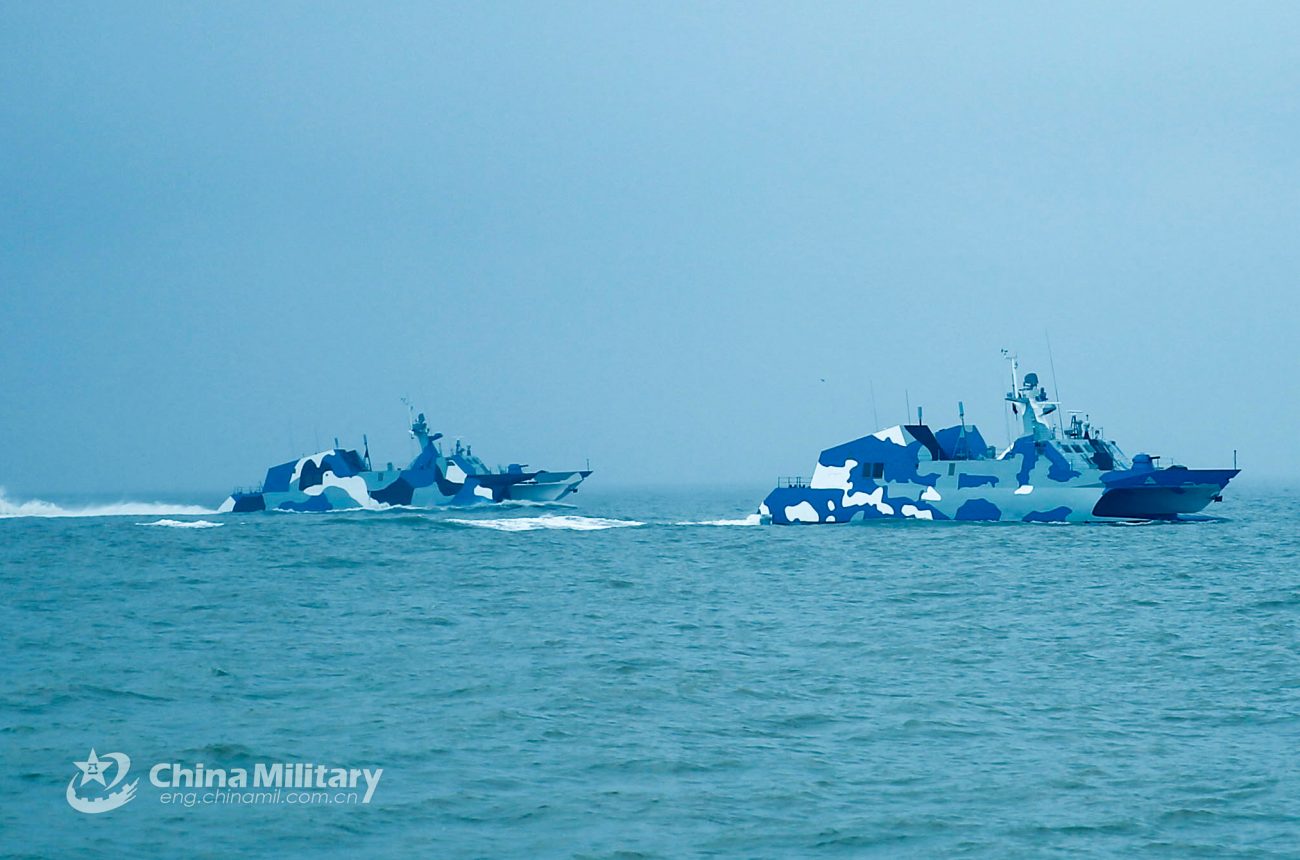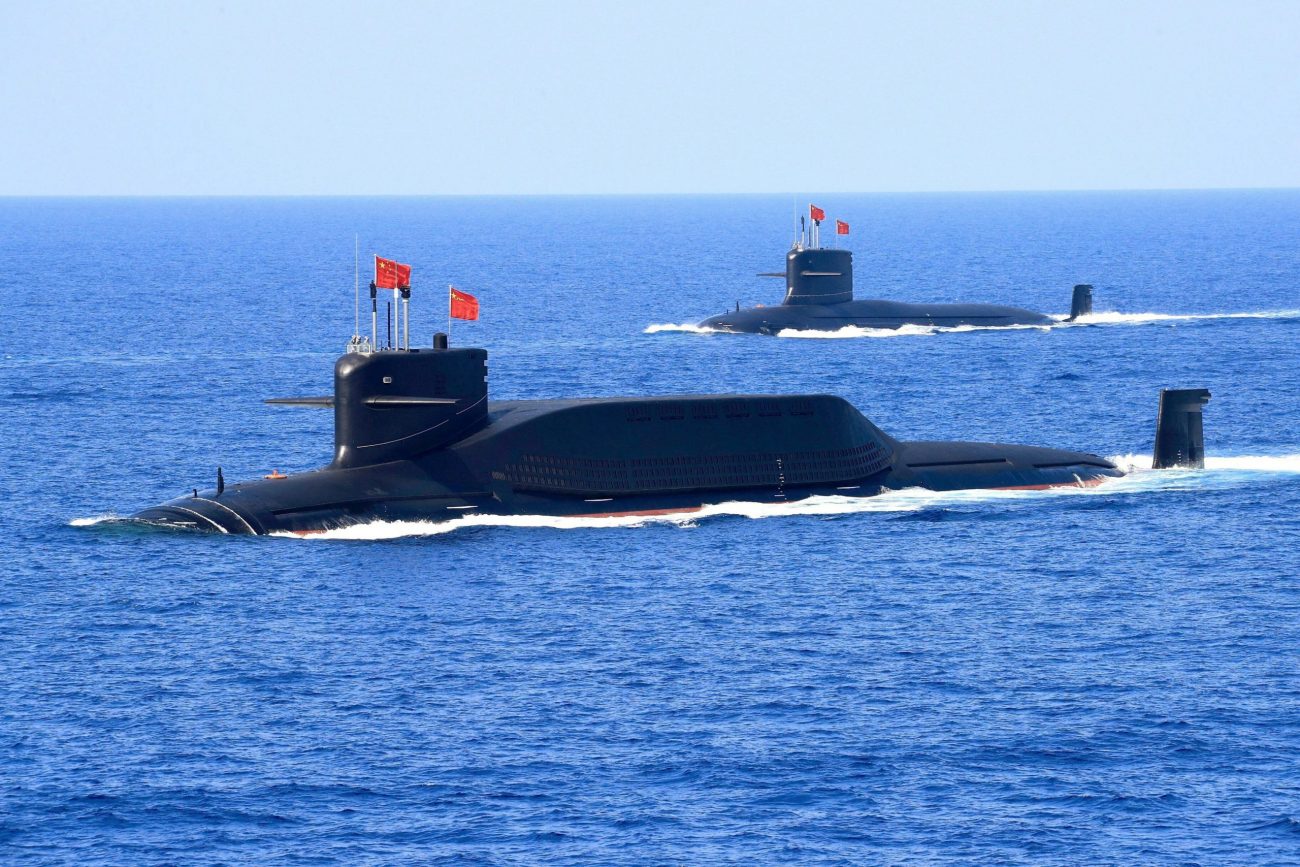OPED By Amb. Gurjit Singh
On Sunday, March 20, the US fleet commander of the Indo-Pacific Command, Admiral John C. Aquilino, flew in P8A Poseidon Multimission Maritime Aircraft over the South China Sea (SCS) accompanied by media personnel.
1000 Times More Destructive – China Claims Underground Military Bunkers No Longer Safe Against Tactical Nuclear Weapons
This was a flight to test and challenge China’s control over the SCS, particularly through the militarization of several islands that they have artificially put up.
The US commander said that this was the most serious and aggressive military development by China in the last two decades. He added that previous calming statements by Chinese leaders were only meant to assuage feelings in the region that China meant no harm.
A Chinese spokesman responded and said: A sovereign country is naturally entitled to deploy necessary defense facilities on its territory. It is consistent with international law and beyond reproach, for China to do so.
However, in reality, China has taken over all the SCS which according to its definition, lies within the Nine dash line. The cross-claims by five different countries from ASEAN, including the Philippines, Vietnam, Brunei, Malaysia and non-territorial claims in the sea of Natuna by Indonesia have been given the go by.
Global media attention is focused on the war in Europe. Countries like India have continuously pointed out that the main threat to global peace and stability is in the Indo-Pacific where the Chinese remain the biggest problem.
Due to this, India has continuously brought up Chinese aggressive intent in their joint statements at the 14th India Japan summit between Prime Ministers Modi and Kishida and the virtual summit with Australia between Prime Ministers Modi and Morrison in March 2022.

With the ASEAN too, India has kept the stability of the Indian Ocean, including the SCS in focus. At the last India-ASEAN summit in October 2021, a separate understanding of working together on the ASEAN outlook for the Indo Pacific (AOIP) was signed.
Through this agreement, AOIP and India’s IPOI will work together on maritime security.
Despite the world’s attention on Ukraine, what is troubling is the consolidation of Chinese activities in the South China Sea. Four major trends can be noted which have acquired a more serious tenor over the last five years.
First, Chinese control over the SCS is established. China now claims all areas within the nine-dash line as its waters. Besides, it backs the claim, with physical action where required.
China’s New Law
It is now supported by the new Coast Guard (CG) law of 2021 which allows Chinese CG vessels to fire at any vessels, which do not comply with their instructions in areas that the Chinese perceive as their own.
Thus, the innocent passage of ships of littoral countries, or ships passing through can all be subjected to Chinese CG’s aggressive action. These CG ships are almost always backed by ships of the PLAN (Navy), in case a bigger threat emerges.
The Japanese defense paper 2021 documented the number of intrusions by Chinese ships into the Senkaku Islands in the East China Sea. Such documentation is not meticulously available from Vietnam, the Philippines, Indonesia, Brunei, or Malaysia.
However, the frequency of Chinese CG vessels testing their littoral waters with little concern for their EEZ or territorial waters is noticed. Reporting takes place sporadically.
Some of the ASEAN countries prefer not to raise the issue frequently, or like Malaysia, rarely. This lack of reporting has underplayed the rise of Chinese aggressive intent.

Secondly, by using their domestic laws and implementing them within the SCS, China now pursues aggressive fishing through its fleets in the SCS, wherever the Chinese fleets want to go. This has led to friction in the Natuna Sea with Indonesia as well. These fishing fleets are backed by CG ships to protect them.
These fishing fleets operate as if these are Chinese waters, shoo away local fishermen, disregard international law of UNCLOS, and do not particularly care about IUU.
The third major instance is that Chinese ships in the SCS are now not playing a deterrent role or merely showing the flag. They have clear intent to keep others out and enforce their will.
This means that their ships whether the CG or fishing trawlers can challenge other ships in the area. The cases of ramming Philippine coast guard vessels, fishing vessels of other countries, offshore platforms of Vietnam, and the like have come to note.
This indicates that the CG law and the support to fishing fleets are fully implemented in what China considers their jurisdiction covering almost the entire SCS.
As the American fleet commander pointed out, the fourth major problem is the militarization of at least three of the islands that China has developed mainly in the Spratly Islands of Vietnam. Mischief Reef, Subi Reef, and Fiery Cross are those developed for military purposes.
New military outposts with full-fledged militarization
By reclamation beyond small rocks and shoals, China developed these by spending recklessly to attain their objectives. These new islands, as per UNCLOS, do not command the same rights as the existing islands of 1982; but China is not trying to claim a jurisdiction around them because it has claimed the entire SCS. These islands are now potent military outposts with full-fledged militarization.
Earlier they were seen as places where border outposts could be located. Slowly, they started acquiring missile and artillery batteries to challenge intruders. Now, docks, ports, and airfields have been completed which allows for the permanent stationing of military bases in these areas.
Besides several military personnel, anti-aircraft, and anti-ship missile batteries, there are smaller ships permanently stationed there from the CG, and PLAN ships are visiting more frequently.
The US flyover these islands revealed that ‘some appeared to house multi-story buildings, warehouses, hangars, seaports, runways, and radars. Near Fiery Cross, more than 40 vessels could be seen anchored.’
Over the last year, China has operated both its aircraft carriers simultaneously and deployed them for operational duties around Taiwan. A Chinese aircraft carrier over the last year rarely comes into the SCS mainly because of the operationalization of these military bases with several types of aircraft.
There are fighter aircraft, mainly used to protect the surveillance aircraft. Surveillance aircraft are the mainstay of these bases and they provide long-distance watch.
China has built 9,000-foot runways on the three islands to accommodate all aircraft in its fleet, including nuclear-capable H-6 bombers. PLA KJ-500 airborne warning and control planes, Y-9 transport planes, and Z-8 helicopters have been seen at these bases along with more recent deployments of J8 fighters.

Aerostats that can observe even in bad weather and are deployed on Chinese borders with North Korea and the Taiwan Straits are also seen over Mischief reef.
They are also how China exercises control over what it considers its jurisdiction in the SCS. Once the observation aircraft spots certain unidentified ships it uses its radar and communication facilities to call in relevant ships to challenge the ‘intruding’ vessel.
These long-range aircraft are mostly unarmed but are escorted by fighter aircraft armed with anti-ship missiles. These fighter aircraft have shorter-range radar mainly meant to look at incoming aircraft and missiles. The reconnaissance aircraft are more designed for surveillance and therefore are the mainstay of this operation.
While the US occasionally challenges these assertions by China, most ASEAN countries do so near their coast. India, Australia, and Japan carry on their usual business.
The problem which may be anticipated is if China is emboldened to declare an Air Defence Identification Zone (ADIZ) over the SCS as it did over the East China Sea in 2013.
That will deeply complicate matters for all interested countries as China will expect everyone to take its permission to fly over the SCS. An ADIZ will impose identification requirements on both civilian and military aircraft irrespective of destination and will check its flight path and would need to be effectively challenged.
- The author is the former Ambassador to Germany, Indonesia, Ethiopia, ASEAN, and the African Union. He is the Chair of, the CII Task Force on Trilateral Cooperation in Africa, and a Professor, at IIT Indore.
- Mail EurAsian Times at: etdesk@eurasiantimes.com
- Follow EurAsian Times on Google News




